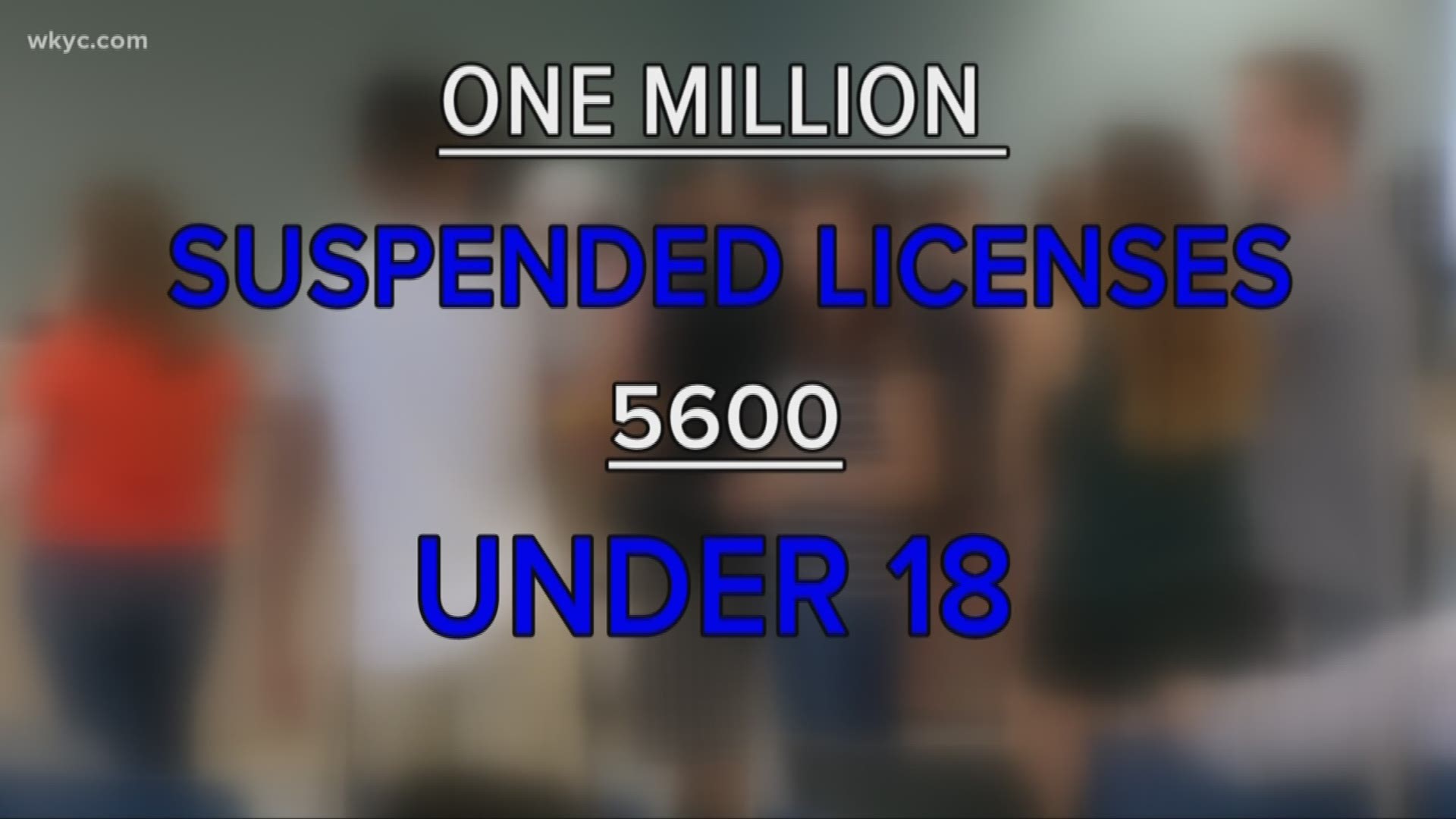AKRON — Lamarcus Thomas never had a license to suspend. He’s got one now.
And he paid for it.
Like over a million other Ohioans, Thomas, now 20, owed thousands of dollars in court and reinstatement fees after several traffic offenses, some that began as a teen.
One by one, he paid it off.
“Money. It’s all about money,” the Akron resident said. “It’s not fair. It’s like I know a lot of people right now that can actually go get their license, but they’re not financially set to go get their license, so.
Ohio is trying to figure out how to fix its license suspension crisis. Over a million drivers in the state have their license suspended.
Many, a Channel 3 News investigation found, lost their license as teenagers.
State records show more than 5,000 suspended drivers in Ohio are under 18.
Advocates for changes to Ohio law say many adults who appear in court have suspensions dating back to their teen years. Fines and reinstatement fees, the contend, unfairly burden lower-income drivers.
But another factor is also clear: Ohio schools have long ago stopped offering driver’s education classes. Just four of Ohio’s 569 school districts still offer the classes. As a result, teens must pay anywhere from $400 to $800 to obtain the required training from private driving schools.
That cost is out of reach for many families. Yet, the lack of a license does not stop teens from driving. And they keep on driving, and racking up tickets and fines, well into adulthood.
For some, their debt is so high, bankruptcy is often used.
“We’re talking about having it snowball so that a person might owe…$4,000 to $5,000 [in fines] and that is insurmountable,” said Judge Kathryn Michael of the Akron Municipal Court. “It’s almost like a tax on the poor…It feels like it overly punishes the working poor.”
Over 1,000 juveniles have had their licenses suspended in Summit County during the past six years. The number is tripled, over 3,000 in Cuyahoga County.
Mike Brown, a retired Akron police officer, works every day helping drivers maneuver the court system and the suspended license maze.
“Most people, I believe, want to drive legally,” he said. “They can’t. They can’t afford to. So, you have to work, you have to take the kids to school. You got to put food on the table. [So you drive]. To them, it’s worth the risk.
“You have to live. You have to survive.”
Babs Uhl, a music teacher in Wadsworth, says her son, Aaron, now 17, may just wait a few more months to get his license. He’ll be 18 and would not require driver’s education classes.
“There’s a lot of people waiting to have their kids drive,” she said. “And they really could be earning money for college but they can’t afford the $400 or whatever for driving school…A lot of people don’t have $400. That’s not on the priority list.”
Uhl said cost is not the only factor. Many private driving schools are far-flung and their available classes do not always coincide with student schedules.
“Driver’s ed needs to be back in the schools,” she said.
Those days are long gone, however. Many districts stopped offering driver’s ed classes decades ago. It’s so long ago, for example, a Cleveland school district spokesperson could not say when the classes ended.
In Akron, a spokesman said it appears their last driver’s ed class was held in 1990.
Barberton Municipal Court Judge Todd McKenney said Ohio is working toward fixing its license suspension crisis. Three bills are pending in Columbus. None, however, are specifically directed at juveniles.
In the meantime, Barberton and Akron courts, and other courts across Ohio, have begun offering payments plans that allow drivers to obtain a license while paying off their fines.
“Our system is designed to punish people who don’t get their license and don’t get insurance. And those are valid points that you need to do that. But then once you’re in that situation, we need programs to help people and encourage them to become lawful drivers,” McKenney said.
“We have too high of a percentage of the population that doesn’t have their driver’s license, they have a number of court tickets and charges and as a result they don’t have insurance—well that’s the worst of all possible worlds.”

